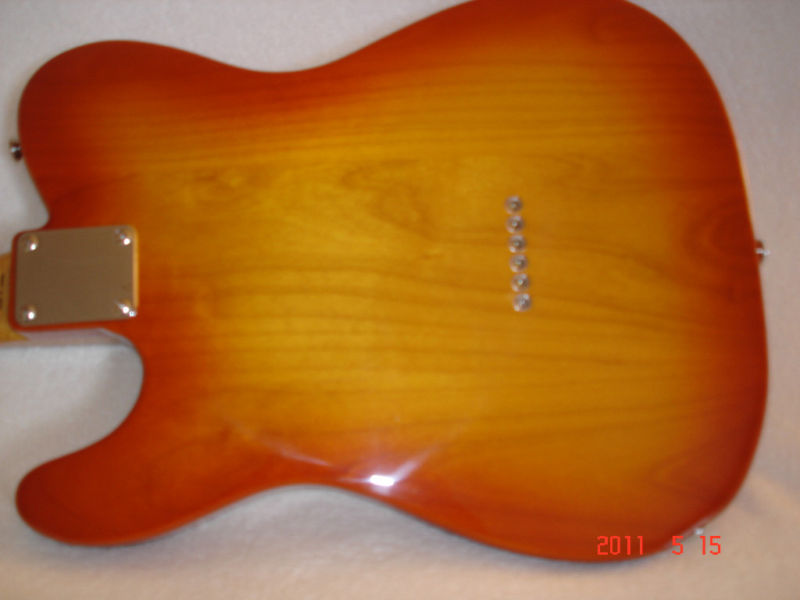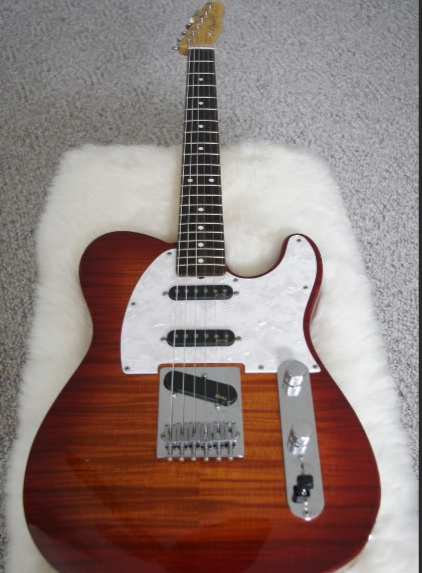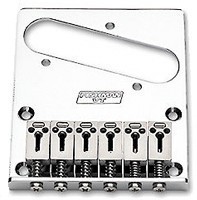I thought it would be cute if I made a fake birth announcement to brag about let everybody know that I have a new guitar.
We joyfully announce the arrival of a modified, customized 1995 Fender Telecaster Deluxe.
Although the new arrival does not yet have a name (any suggestions?) it appeared with a gorgeous Foto Flame finish, carbon graphite Moses Neck, Fishman active pickup mounted in the bridge and a special 5-way toggle switch to get a wide array of sounds from James Burton traditional Tele to Jimi Hendrix Strat to Clapton Les Paul with Marshall Stack to whatever-else.
The new arrival was greeted by his grandfather, a 1956 Gibson ES-125T archtop electric, his parents, a 1975 Kramer G400 electric and a 1975 Lyle dreadnought acoustic, a surly sibling, recent vintage B.C. Rich Warlock and some less reputable acoustic and electric relatives.
The family was grieving over the loss of their favorite uncle, a 1962 Fender Jaguar who went missing several years ago, and this new addition is just what we needed to cheer up everyone.
****
For those who are interested in technical specs and are dazzled by BS, please continue reading after the jump.
The guitar is a heavily-modified 1995 Fender Telecaster “Foto Flame” — a short-lived series (about 18 months) attempting to compete with some of the “flame top” guitars put out by Paul Reed Smith and Dean Guitars.
 The instruments were made in Japan where (reportedly) the quality was too good to last. How good? Well, the guitars were competing with the other high-end guitars Fender was making (quality-wise) and this was the reason the company shifted manufacturing to Mexico.
The instruments were made in Japan where (reportedly) the quality was too good to last. How good? Well, the guitars were competing with the other high-end guitars Fender was making (quality-wise) and this was the reason the company shifted manufacturing to Mexico.
The finish is really — no BS — a photographic slide of some wood grain laminated onto the (probably less-interesting) wood of the guitar body. I’d never heard of this before.
I did some GOOGLE research and studied this technique before investing my hard-earned (HEY– getting people to play 3-card monte in this econonomy is HARD!) money. I even made a pilgrimage to San Diego county’s primo guitar tech Fred Marotta @ The Repair Zone to run this by him. He told me it’s a valid technology. Plus — when I told him about the modifications, he convinced me I’d be a fool to let this one slip past my stubby fingers.
The neck is even stranger than the photographic film shrink wrap on the body. It is a Moses model SKT-27, made out of carbon graphite. That’s right — I’m now playing a feakin’ Fender Pencil-caster! This material is a light-weight but super-strong for maximum reinforcement. So if one should, hypothetically, knock over one’s guitar after about twelve Bud Lights, there is a better chance of the guitar surviving without a broken neck.
FULL DISCLOSURE: I would never drink light beer.
The pickups are also customized. The traditional Tele is a solid body dual pickup guitar. Each pickup is a single-coil (a bar magnet with wire wrapped around it) which acts as a microphone to send the string vibrations to an amplifier. One is positioned up where the neck of the guitar joins the body and the other is down lower near the bridge.
A 3-position lever allows the player to switch to getting sound from the upper pickup (which emphasizes more bass and sounds good for Jazz and for power rock) and the lower pickup (which emphasized treble, good for country, twangy surf music or rockabilly). In the middle position, both pickups are active and the sound can be blended for a variety of tastes.
Each pickup has it’s own knob for separate controls or blending them together, and there is a single volume control knob.
There were other models with different types of pickups, such as humbucking pickups (similar to the Gibson Les Paul) but the above description is the classic “Tele” sound.
This customized version — and all modifications were done by Karl Mayforth of Albaquerque, NM who is a notable craftsman in this field, swapped out the original bridge pickup for a Fender Custom Shop vintage model. I think this means it has more windings of wire around the coil than the other pickup, making it “hotter” — having increased output.
In addition there is an added pickup — which is actually a replacement bridge with an active pickup in it — the Fishman VT Powerbridge.
This requires it’s own power source — a 9volt batterie that you put into a hollow niche in the back of the guitar — and gives the Tele the sound of playing an acoustic guitar.
No BS — and there is a stereo ouput so you can play with the Fishman pickup alone or blend it with the other two pickups for a variety of sounds.
Needless to say, more complicated controls are required for this. The three-way lever switch has been replaced with a 5-way switch, allowing all kinds of permutations of pickup sounds.
So that’s the low-down skinny 411 on the new axe. How much did it cost me, you are asking?
Nunaya bizness. Let’s just say I did my homework and could turn around and sell it for a profit immediately. But I won’t — this is probably going to be my main axe (or in rotation with the Gibson as #1 and #2). I don’t think I will be sellling it — at least for a long time — and it may just be one of the most in-demand items in my will.
You want to hear it in action? I’ll get right on that and be doing some recordings — maybe videos — and post them for you right here.
And now, I feel a “twang” coming on … Adios!
WADE


Leave a Comment